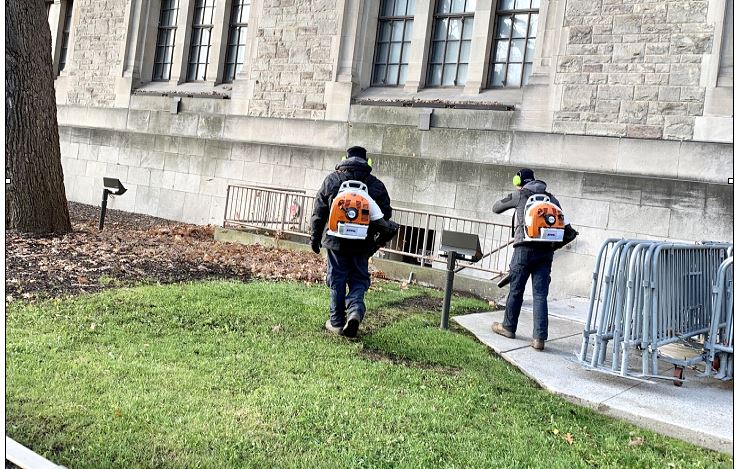Leaf Blower vs Rake

TORONTO – Before the heavy snowfall of November 28th this year, there was added noise that Torontonians were dealing with – leaf blowers. As if the construction noise and ambulance/fire truck/ police cruiser sirens were not enough, leaf blowers have added to the deafening noise of the city.
What is a leaf blower. Wikipedia defines it as “a gardening tool that propels air out of a nozzle to move debris such as leaves and grass cuttings”. It can be powered either by electricity or gasoline. The first leaf blower was invented by Kioritz Corporation of America and made its debut in the market in 1977. The following year, the company changed its name to Echo.
“Should Toronto Ban Leaf Blowers?”, asks Ron Johnson for TRNTO, in his article dated November 3rd, 2021. In it, he wrote about opposing views on the issue of leaf blowers by city councillor Shelley Carrol and Landscape Ontario’s Tony DiGiovani. The city council had approved the year before Councillor Carol’s motion to study the impact of leaf blowers powered by gas and other gardening equipment on the environment. Carol argued on the effects of leaf blowing on the environment, that apart from the noise it emits, it has an impact on the air quality of the city. An hour of leaf blowing equals 1,700 kms of car driving emission. She added that gas-powered equipment like that of a leaf blower contributes to the decline of insect population due to loss of their habitats and may lead to the “collapse of our terrestrial and freshwater ecosystems”.
DiGiovani, on the other hand, defended the use of power tools such as leaf blowers especially in parks which Toronto has plenty of but which has a shortage of employees. Parks in Toronto are spacious, with many trees, and it can be daunting just dealing with the fallen leaves during Fall. He admits that nobody wants to listen to the noise of the leaf blower but pointed out the vital information that the parks department is the biggest user of leaf blowers.
Leaf blowing, in my opinion, is the lazy man's way of gathering fallen leaves during the Fall. I refer to occupants of residences whose yards have trees. I understand its use in the parks but in residences, I am baffled. Whatever happened to getting some exercise in the open air which, to me, is ideal during the Fall months. I remember my first year in Canada, helping my nephew rake in leaves in my sister's backyard and bagging them, thereafter. It was my first experience, having come from the Philippines where we use rakes mostly to level the ground before adding tar and topping it with concrete. That experience of raking the fallen leaves from the trees of my sister's yard left me exhilarated.
These days, rakes are a rarity. Leaves get blown by the leaf blower, oftentimes to the street, which is illegal by city law just like snow cleared off the sidewalk and tossed on to the street is, and end up clogging the sewers. Before the pandemic,
I would see city workers clearing the sewers. Now, 18 months into the pandemic, sewers in my area are left with leaves clogging the water meant to flow into them. Although I’ve seen truck sweepers once in the downtown core, unfortunately, I didn’t see them cover the side streets where leaves have blown to the side and would’ve been ideally picked up by the sweeper.
While I’m writing this, there has been one heavy snowfall. Winter is just around the corner. Most trees are bare at this time of the year. However, their leaves remain on most edges of the side streets where highrises and houses are. Here’s hoping that they don’t clog up the sewers when snow starts to melt as is the case after a snowfall and the temperature rises. Otherwise, there goes my footwear, just a few weeks old. And don’t get me started on how the best brand of boots can spring a leak during the winter.
In the pic, workers using leaf blowers in Royal Ontario Museum yard (photo by Ricky Castellvi)



